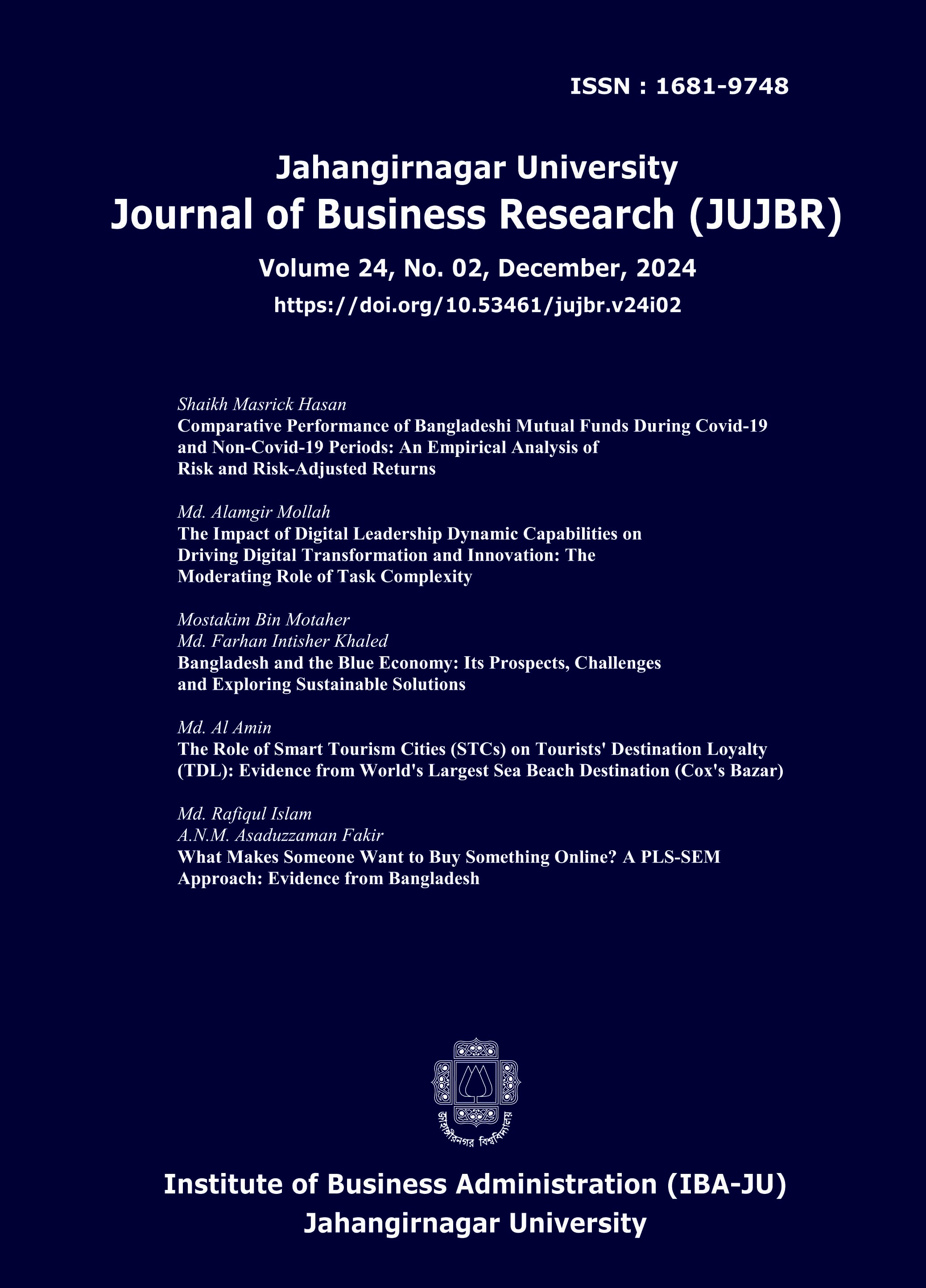The Role of Smart Tourism Cities (STCs) on Tourists' Destination Loyalty (TDL): Evidence from World's Largest Sea Beach Destination (Cox's Bazar)
Role of Smart Tourism Cities (STCs)
DOI:
https://doi.org/10.53461/jujbr.v24i02.68Abstract
This research identified dimensions of smart tourism cities (STCs) and measured their impact on developing tourists' loyalty towards a specific location. This study employed a descriptive research methodology, utilizing quantitative approaches to find out the components of STCs and their impact on tourists' destination loyalty (TDLs). The convenience sampling method has been employed to gather data from 300 individuals. Quantitative data analysis was conducted using smart PLS 4 with the SEM application. The results indicate that four components, including smart tourist applications (apps), smart accommodations, innovative governance, and intelligent people (service providers), positively influence the TDL. Tourists emphasize tourist apps, advanced amenities like VR technology, live streaming, tourist-friendly destination management, and efficient and skilled workers to develop loyalty towards a smart tourism city. This study attempt can potentially motivate stakeholders in the tourism industry, particularly hotel owners, transportation owners, government officials, and other relevant parties, to develop a smart and sustainable tourist city. Moreover, the results could assist policymakers in identifying the specific aspects of STCs that are most impactful in fostering loyalty among tourists. This study exclusively focused on Cox's Bazar as a prospective smart tourist destination. Therefore, future studies should consider other destinations from various locations to achieve comprehensive knowledge. This study describes every possible dimension of STCs and correlates each dimension with tourist loyalty.
Downloads
Published
How to Cite
Issue
Section
License
©2018 Jahangirnagar University Journal of Business Research. All rights reserved. However, permission is granted to quote from any article of the journal, to photocopy any part or full of an article for education and/or research purpose to individuals, institutions, and libraries with an appropriate citation in the reference and/or customary acknowledgement of the journal.


